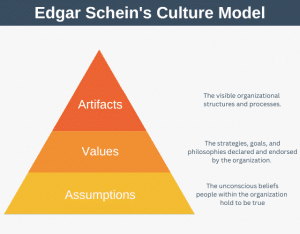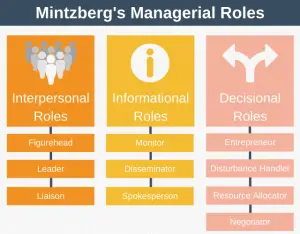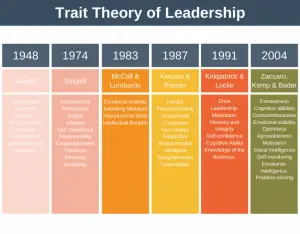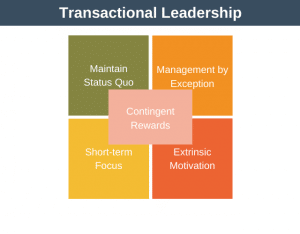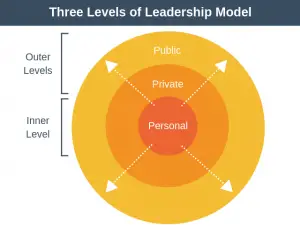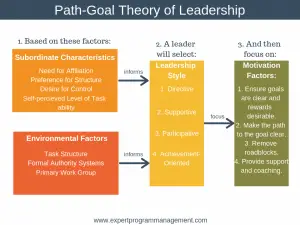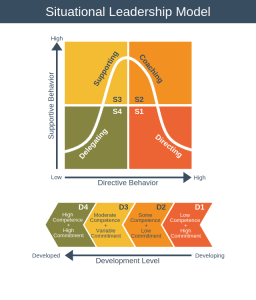The 5 Levels of Leadership was written by John C. Maxwell and helps you answer a couple of fundamental questions about leadership.
Namely, where are you as a leader right now, how do you get to the next level, and where should you ultimately aim to be as a leader?
Leadership isn’t a position you hold; it’s a journey and a process. Just because you have the word “manager” in your job title, you’re not automatically a great leader.
Leadership is about dealing with people, and the dynamics between those people, which means that the better you can influence people, the higher your leadership ability. The book provides a roadmap to get your leadership from where you are now to where you want to be.
Assessing The Current Situation
The book begins by encouraging you to determine which of the 5 Levels of Leadership you are currently at. It provides a four-step process to help you to do this.
- You assess your leadership.
- You assess each of your team members.
- Your team members assess you anonymously.
- Tally your results from the three assessments and see where you are.
You can assess yourself by following this link.
Background
John C. Maxwell is a leadership expert, speaker, minister, and author who has sold over 20 million copies of his books worldwide.
In 2014 Inc. Magazine named him the #1 management and leadership expert worldwide.
The 5 Levels of Leadership
The 5 Levels of Leadership are shown in the following diagram.
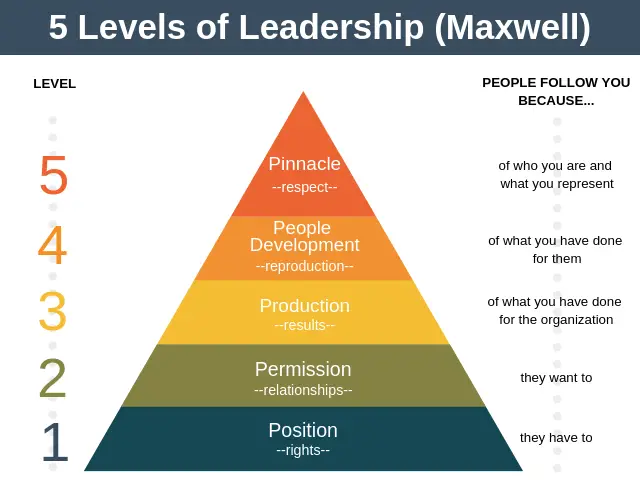
Here is a very brief overview of each of the 5 Levels of Leadership.
- Level 1: Position. People follow you because they have to.
- Level 2: Permission. People follow you because they want to.
- Level 3: Production. People follow you because of what you have done for the organization.
- Level 4: People Development. People follow you because of what you have done for them.
- Level 5: Pinnacle. People follow you because of who you are and what you represent. You get to this level when you develop new leaders that are themselves able to build leaders. The book estimates that less than 1% of leaders make it to this level.
Everyone starts their leadership journey at level one. The 5 Levels of Leadership provides a process to follow to grow as a leader, with the ultimate aim of making it to level five.
The 10 Insights
The book provides ten insights that can help you make more sense of the interplay between the levels.
- When you move up a level, you build on the previous level. You don’t leave it behind.
- Leadership is dynamic. You can work at a different leadership level from one team member to the next.
- The higher you go, the easier it becomes to lead.
- There is no shortcut to get to the next level. Each level requires more time and effort to reach it than the previous one.
- Although moving up a level takes a lot of time, moving down one or more levels can happen very quickly.
- The higher you go, the greater the returns.
- Moving to the next level always requires growth.
- Not getting to the next level not only limits you, but it also limits each of your team members.
- When you change position or organization, you rarely stay at the same level.
- You cannot climb the levels alone.
Let’s move on and examine each of the 5 Levels of Leadership in some more detail.
Level 1: Position
Position is the very first level of the 5 Levels of Leadership, and it represents the beginning of everyone’s leadership journey. Leadership at this level is granted because you receive a job title, but you haven’t yet built the influence to command respect from colleagues, either inside of or outside of your team.
While you have authority over your team, at level 1 you don’t wield any real influence over them so its hard to get the most out of them. Your team does what you tell them because they have to.
At level 1, you might be the boss, but you aren’t yet a leader. As such, it’s important not to see being given a management job title as your goal. Instead, try to see it as your starting point.
Upsides of Level 1
Some of the upsides of becoming a level 1 leader include:
- You’ve been given a leadership position because you deserve it, and this is something to celebrate.
- It allows you to think about what kind of leader you want to be, e.g. What’s your style? What are your values? You’re at the beginning of your leadership journey, so now is an excellent point to think about these things.
Downsides of Level 1
- Positional leaders don’t get the best out of their team; they probably get the minimum.
- Positional leadership can be misleading, i.e. just because you have a particular job title does not make you a leader.
- Position leaders can focus on politics and getting the next job title.
How to Make the Most of Your Position
- Don’t push people, help them and take an interest in them.
- Don’t expect your people to come to you, you must initiate things to earn their respect.
Laws of Leadership at the Position Level
- Lid: to unlock your effectiveness, you must commit to developing yourself as a leader.
- Process: Recognise that developing yourself as a leader is a lifelong process.
- Navigation: Recognise your limits. You might be able to steer the boat, but you’re not yet ready to chart the course.
To learn more about these laws, you will need to purchase the book, The 21 Irrefutable Laws of Leadership, also written by Maxwell.
Beliefs to Get to the Next Level
Before you can get to the next level, you must upgrade your beliefs:
- Your job title isn’t that important. It’s the work you do and how you help others.
- Your position is a tool you can use to help others, but people are your most valuable asset.
- A good leader doesn’t need to have the answer, they can work with others to find the answer.
- Good leaders include others.
Level 2: Permission
On this level of the 5 Levels of Leadership, your team follows you because they want to. You listen to your people and they, in return, listen to you.
Leaders on this level make people know that they matter. They make each member of their team feel important.
On this level, people want to work for you because they feel liked, valued, included, and trusted. Because of your strong relationships, people permit you to lead them.
As your relationships grow, so does trust, and the workplace becomes a more positive place. Lasting relationships create the foundation of Level 3.
In a nutshell, this level is all about relationships.
Upsides of Level 2
Some of the upsides of becoming a level 2 leader include:
- Work is more enjoyable when you get on with your team, and they get on with you.
- Spending time amongst people you like boosts everyone’s energy.
- Good relationships are formed when people value and respect each other.
- Two-way communication occurs at this level. You listen to your people, and they listen to you. This leads to better decision making.
Downsides of Level 2
- Being so focussed on relationships can make you seem weak as a leader.
- It can be frustrating to work in this way if your ambitious and just want to get things done.
- To be effective, you need to be open.
- You can leave yourself open to being taken advantage of.
How to Gain People’s Permission
- You must get to truly know yourself before you can openly get to know others.
- Develop a leadership style that is focused on people, rather than tasks.
- Treat others as you yourself want to be treated.
- Praise, along with words of encouragement are important. Be your team’s chief encourager.
- It is important to balance care for team members with candor.
Laws of Leadership at the Permission Level
- Influence: The true measure of your leadership is your influence.
- Addition: Add value by helping and serving others. Focus on people, not systems.
- Solid ground: Be trustworthy.
- Magnetism: Be the type of person you want to attract.
- Connection: Work on relating to people.
- Buy-in: Work to get people to buy-into (trust) you.
Beliefs to Get to the Next Level
- Recognize that there is more to leadership than just influence; you have to take people somewhere.
- As well as growing closer, you must grow together.
- Sometimes it’s worth risking a relationship to achieve a vision as a team.
Level 3: Production
This level of the 5 Levels of Leadership is about delivering results. This level separates true leaders from leaders who simply hold a position.
There is more to being a leader than getting on with people. Great leaders get results. When followers see you achieving great results, it gives them a reason to follow you. When you deliver exceptional results, your leadership intensifies.
It’s on level 3 that influencing others can become fun. This is the first level where a leader can become a change agent: tackle thorny issues, big projects, and take their followers to the next level.
A history of achieving results combined with excellent relationships enables you to move your team towards the organization’s vision.
Upsides of Level 3
Some of the upsides of becoming a level 3 leader include:
- Your credibility increase when you deliver results.
- Your results set a standard for your followers, further increasing results.
- Delivering results builds momentum.
- People see your results and want to be part of your team.
Downsides of Level 3
- You can fall into the trap of thinking your a better leader than you are. You need to achieve results for your team as well as for yourself.
- There is a weight of responsibility associated with having to continually achieve results.
- Even though you are focused on results, you must not lose sight of your people. Level 2 is still important.
How to Make the Most of Production in Leadership
- Figure out where your strengths lie and focus on these areas.
- Communicate a clear vision. This will help with team productivity.
- Encourage your people to work together. This is the foundation of building a team.
- Focus on areas with the highest return, and never lose sight of the fact that results are your goal.
Laws of Leadership at the Production Level
- Respect: People will naturally want to follow leaders they see as stronger than themselves.
- Magnetism: Who you are is who you attract.
- Picture: People’s behavior mirrors what they see each day.
- Victory: Find a way for your team to win.
- Big Mo: Momentum is your new best friend.
- Priorities: Focus on results and not activities.
- Sacrifice: Let go of nonessentials.
- Buy-in: People will buy-in to you as a leader before they buy into your vision.
Beliefs to Get to the Next Level
- Production isn’t enough. Think about how you can help people get to the next level in their lives and careers.
- Value, challenge and develop your followers.
- Growing leaders is the quickest way to achieve a vision.
- Developing your people gives you great fulfillment.
Level 4: People Development
At this level of the 5 Levels of Leadership, leaders change from focusing on delivering results to developing people. Leaders at this level reproduce themselves.
Leaders at this level reproduce and grow their influence as they transform followers into leaders in their own right. As the unique strengths of each new leader are unleashed, the entire organization rises to a higher level.
This level is all about reproduction.
Upsides of Level 4
Some of the upsides of becoming a level 4 leader include:
- At level 3, you focus on results, but at level 4, you deliver even better results by focusing on your people and empowering them to achieve.
- Only by growing people can success be sustained.
- If you grow others, it gives you the space to work on bigger things.
- It is hugely rewarding to see others develop.
Downsides of Level 4
- If you are insecure, you can feel threatened by the prospect of developing others.
- You must be willing to focus on the long-term. If you stay focused on the short-term, it can be hard to see the justification for developing your people.
How to Develop People
- Recruit only the best people you can.
- Place people into the right positions.
- Model to others the leadership behavior you expect from them.
- Coach others to live well and perform well.
- Empower others so they can succeed.
Laws of Leadership at the People Development Level
- Process: Leadership is a process; it doesn’t happen overnight.
- Addition: You add value when you serve others.
- Inner circle: Those in your inner circle determine your potential.
- Empowerment: Only a secure leader is willing to give power to others.
- Explosive growth: Developing new leaders is the only way to explosively grow the organization in a way you could never achieve on your own.
- Buy-in: People will buy-in to you as a leader before they buy into your vision.
Beliefs to Get to the Next Level
- Your biggest goal as a leader is to create more leaders.
- Believe in developing a leadership culture: teach, practice, coach, and reward leadership.
Level 5: Pinnacle
The highest level of the 5 Levels of Leadership is level 5. Maxwell argues that not many people make it to this level and those that do are naturally gifted.
Level 5 leaders develop their followers into level 4 leaders.
Developing leaders who can lead and not just follow is hard. It takes great skill, judgment, and commitment. But if you succeed, you will create a level 5 organization: an organization that is functioning at an extraordinarily high level.
Upsides of Level 5
Some of the upsides of becoming a level 5 leader include:
- It provides your leadership with reach. People will seek you out for advice.
- It creates a level 5 organization.
- You will create a legacy within the organization
Downsides of Level 5
- You can forget that there is always more to learn and more room to grow.
- You can start to believe your own press.
- You have to work hard to maintain focus on the vision.
How to Use the Pinnacle as a Platform to do Something Greater than Yourself
- Remain humble and open to learning.
- Create an inner circle to help keep you grounded.
- Create room at the top.
- Focus on what only you can do (your core strength).
- Plan your succession and your legacy.
Laws of Leadership at the Position Level
- Respect: People naturally gravitate toward leaders who are stronger than themselves.
- Intuition: You will be able to see what courses of action lead to what outcomes.
- Timing: You will have learned how to take the right action at the right time.
- Legacy: You legacy will be measured by your successors.
- Explosive growth: Developing new leaders is the only way to explosively grow the organization in a way you could never achieve on your own.
5 Levels of Leadership Summary
Sometimes leadership books can read like a giant recipe, listing a multitude of things that you need to do and believe to consider yourself a great leader.
One of the things I really liked about this book is that it doesn’t do that. It helps you to figure out where you are right now as a leader and then gives you some advice to help you get to the next level, no matter what level you’re on right now.
In my opinion, it’s a good, detailed, and practical book which makes intuitive sense. However, it isn’t as far as I know backed up by research. Nevertheless, I’d still rate this book as a must-read for aspiring leaders and established leaders alike, and score it 9 out of 10.
To summarize the 5 Levels of Leadership, leadership is about growth in everything you do and everyone you interact with. It’s a lifelong, challenging journey that can be immensely rewarding. The book provides a practical roadmap of how to get from where you are as a leader currently to where you want to be. You just need the courage to embrace it.

